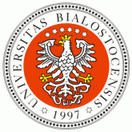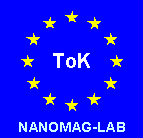Sponsors:






|
|
Organized by
the Institute of Experimental Physics, University of Bialystok
Andrzej Szytula
M. Smoluchowski Institute of Physics, Jagiellonian University, Reymonta 4,
30-059 Krakow, Poland
Magnetic phase transitions studied by neutron diffraction and complementary techniques
-
One of the important problems in solid state physics is investigation of phase transitions in crystals. The methods employed to investigate the magnetic phase transitions could be distinguished as macroscopic and microscopic ones. To the first group belong: temperature dependence of magnetization, magnetic susceptibility, electrical resistivity and specific heat while to the second one neutron diffraction and Mössbauer effect. Both macroscopic and microscopic methods: give information on the critical temperatures of magnetic ordering (antiferro- or ferro-), as well as of the magnetic phase transitions (changes in the magnetic structure) in the ordered phase. However, information from different experimental data not always give the same results.
During last years the quick evolution of neutron diffraction measurements with multidetectors and also with single crystal samples permits new interesting results.
In this work results obtained for some rare earth intermetallic compounds are discussed. The aim of this lecture is not to give a complete review of these phenomena. We will focus on some examples chosen to illustrate the large variety of behavior in magnetic phase transition regions. There will given some examples of investigations in which both methods: macroscopic and microscopic (neutron diffraction) give similar information and some examples in which the results of different methods are contradictory will be also presented.
The data presented in this work concern the two groups of compounds:
- RT2X2 compounds (R is a rare earth element, T is a transition nd-element and X is Si or Ge). They crystallize in the simple tetragonal crystal structure of the ThCr2Si2-type (space group I4/mmm). The R atoms with the localized magnetic moment occupy one sublattice,
- R3T4X4 compounds (X is Si, Ge, Sn) that crystallize in the orthorhombic Gd3Cu4Ge4-type (space group Immm) structure, in which the rare-earth atoms occupy two different crystallographic positions. Correlations between the two rare earth sublattices play the key role in the complex magnetic behavior of these materials.
|
|
|